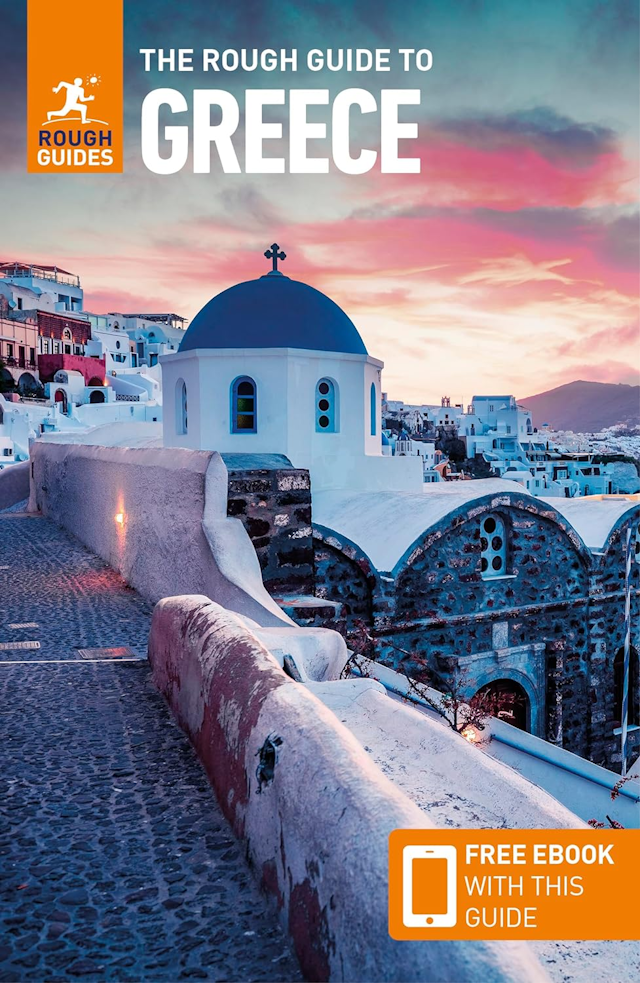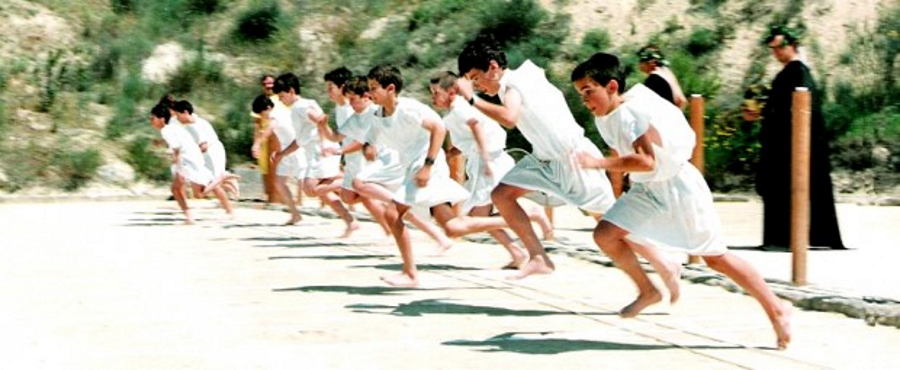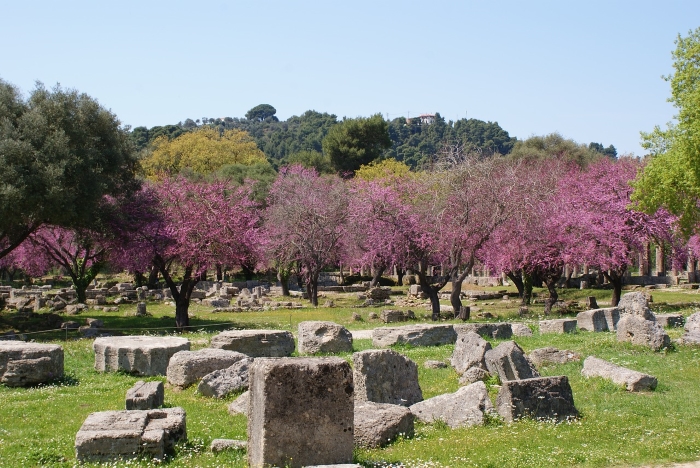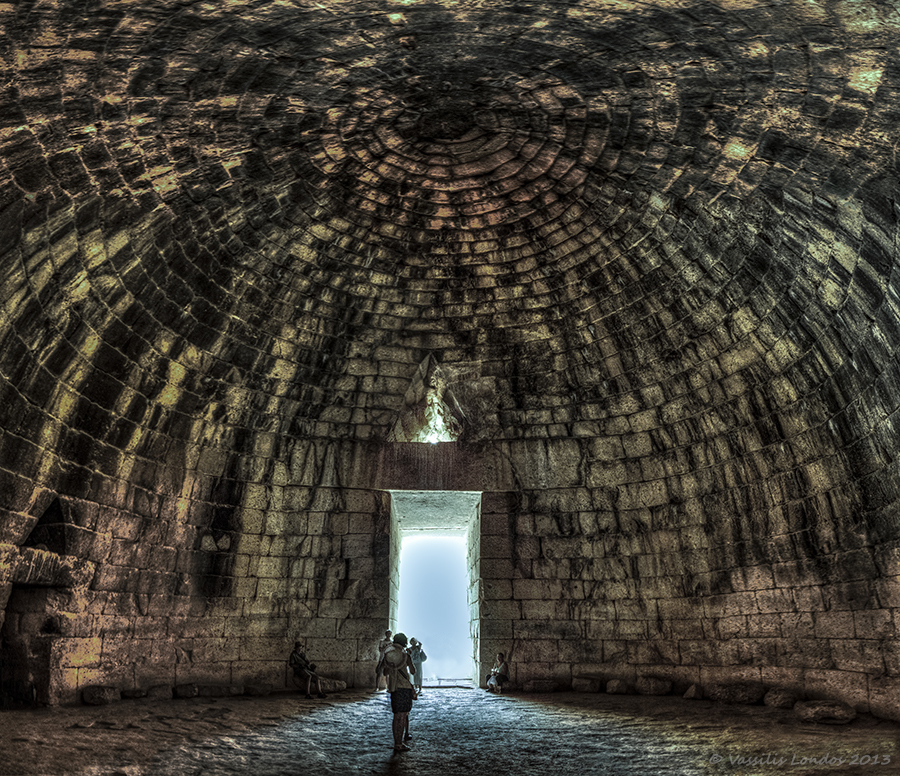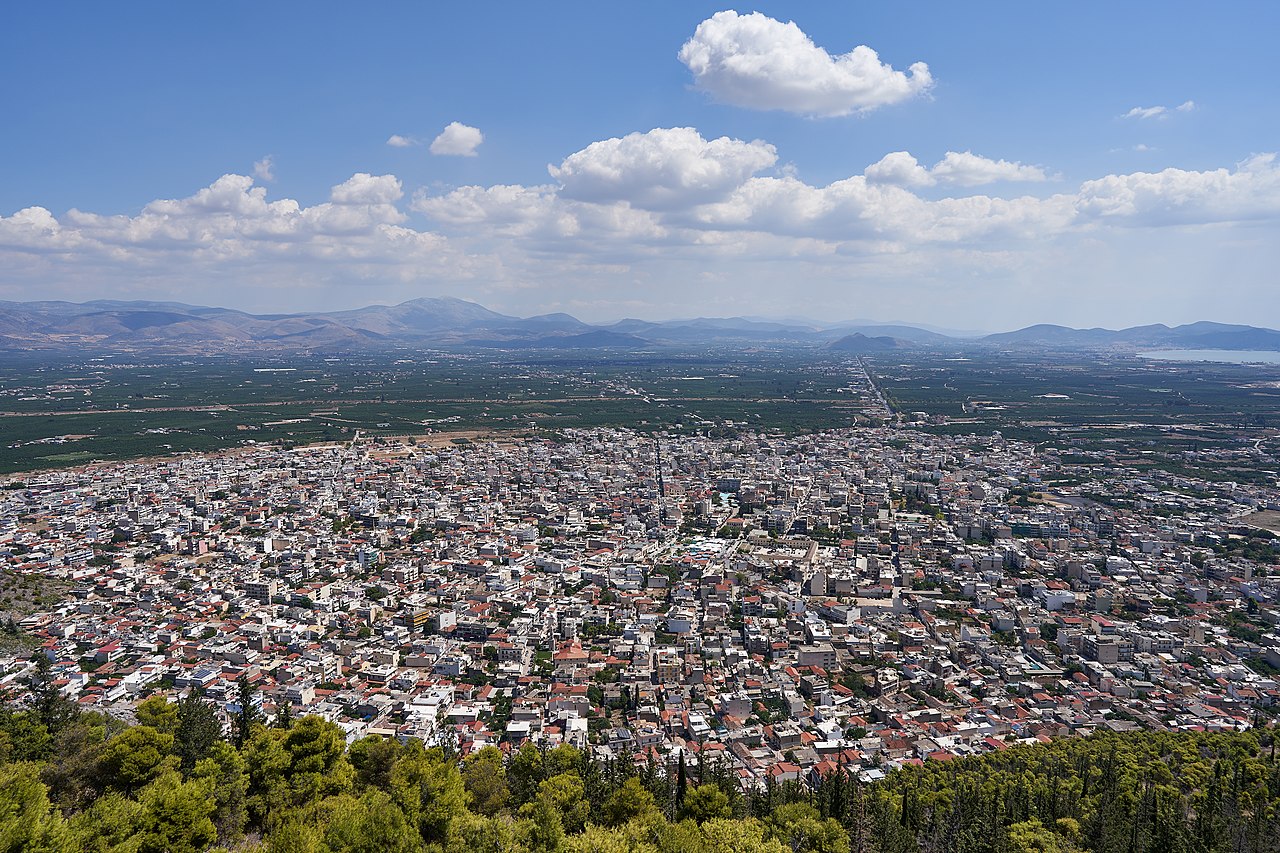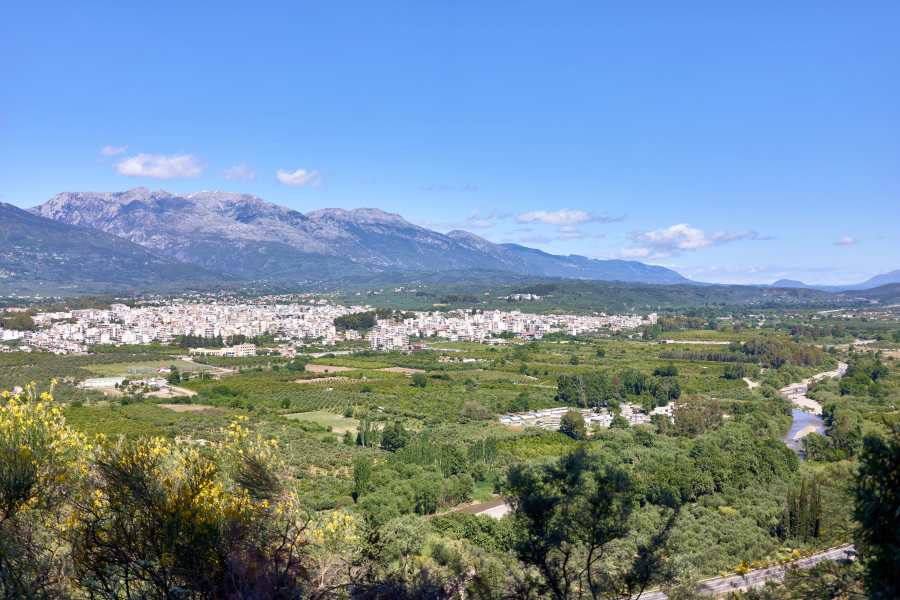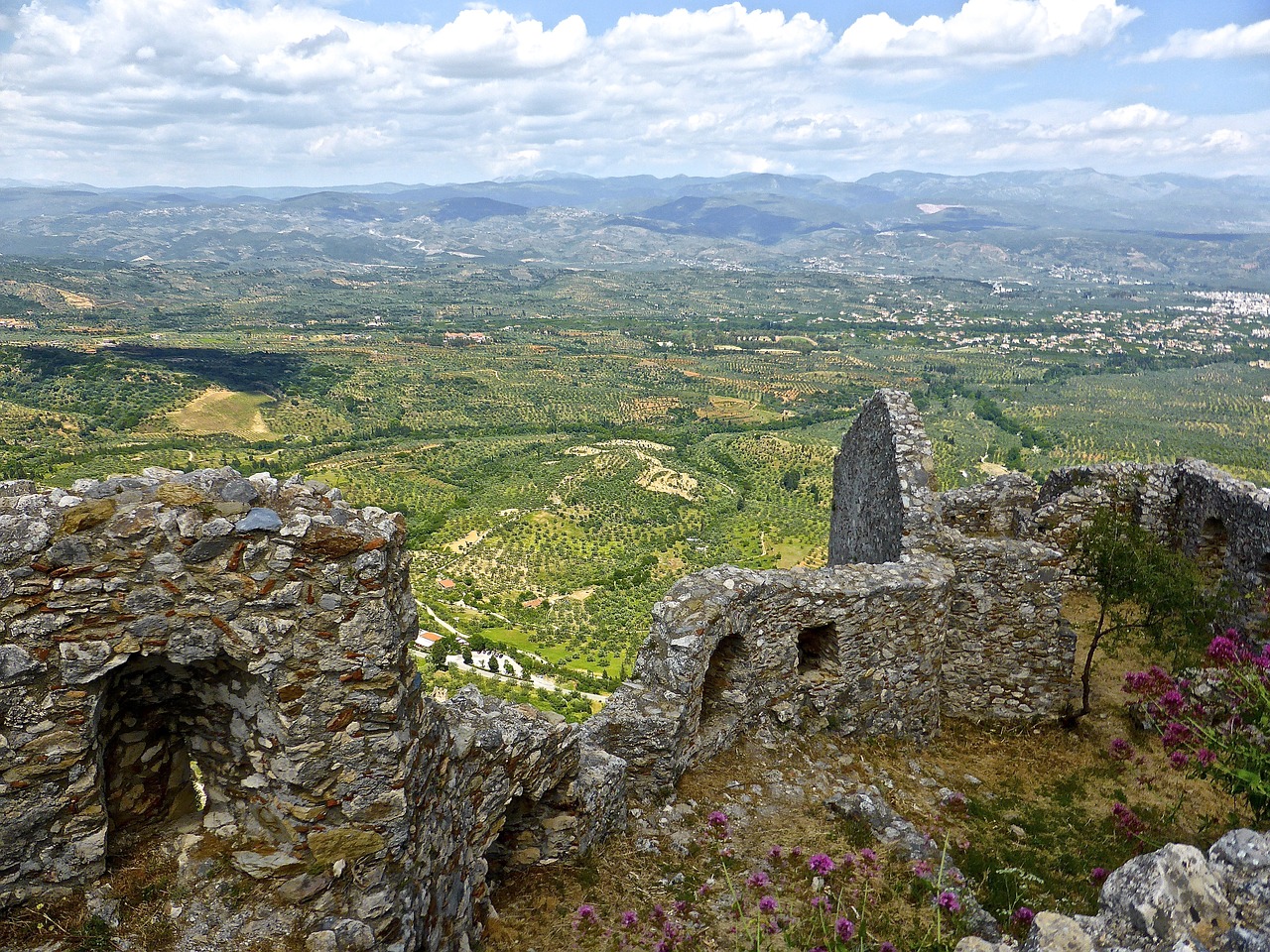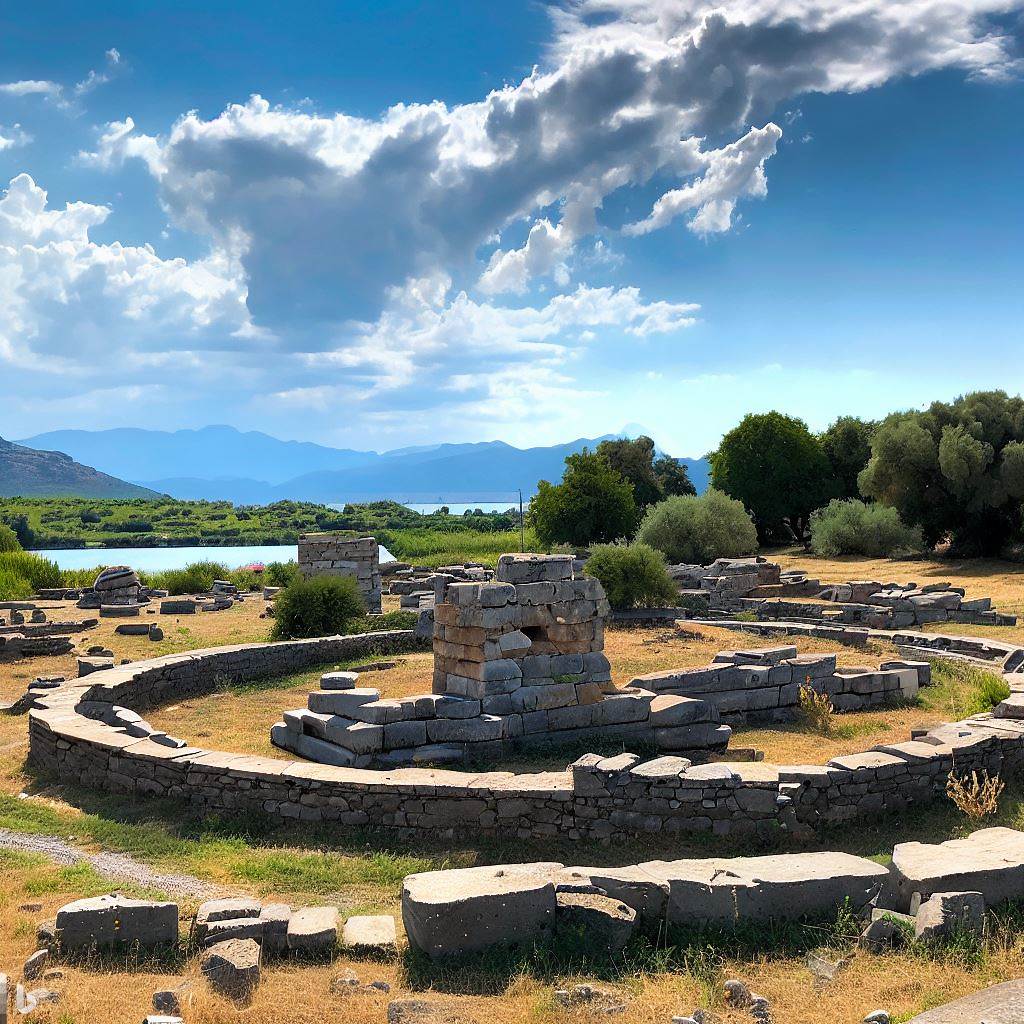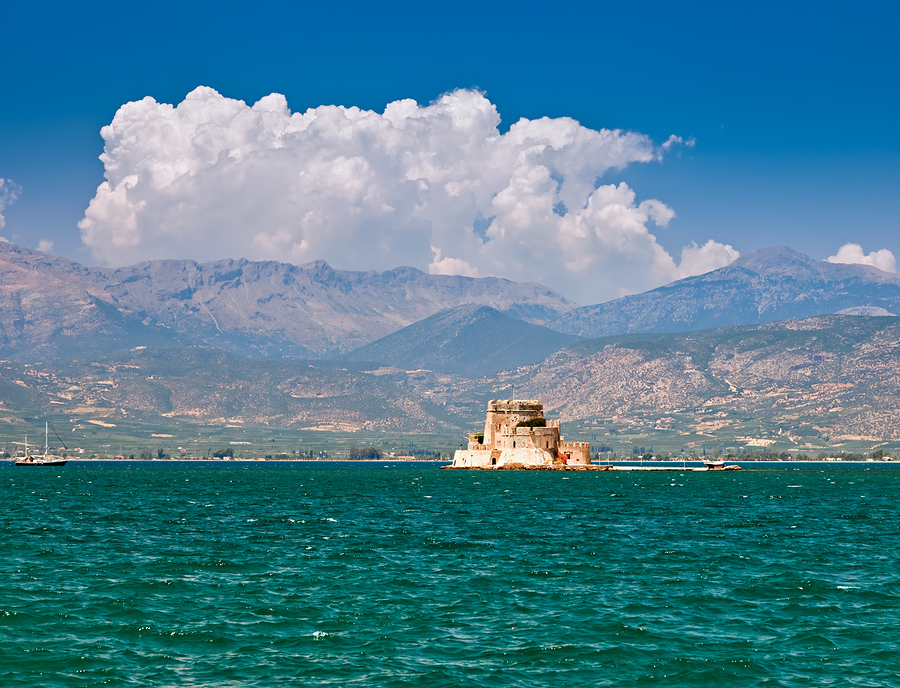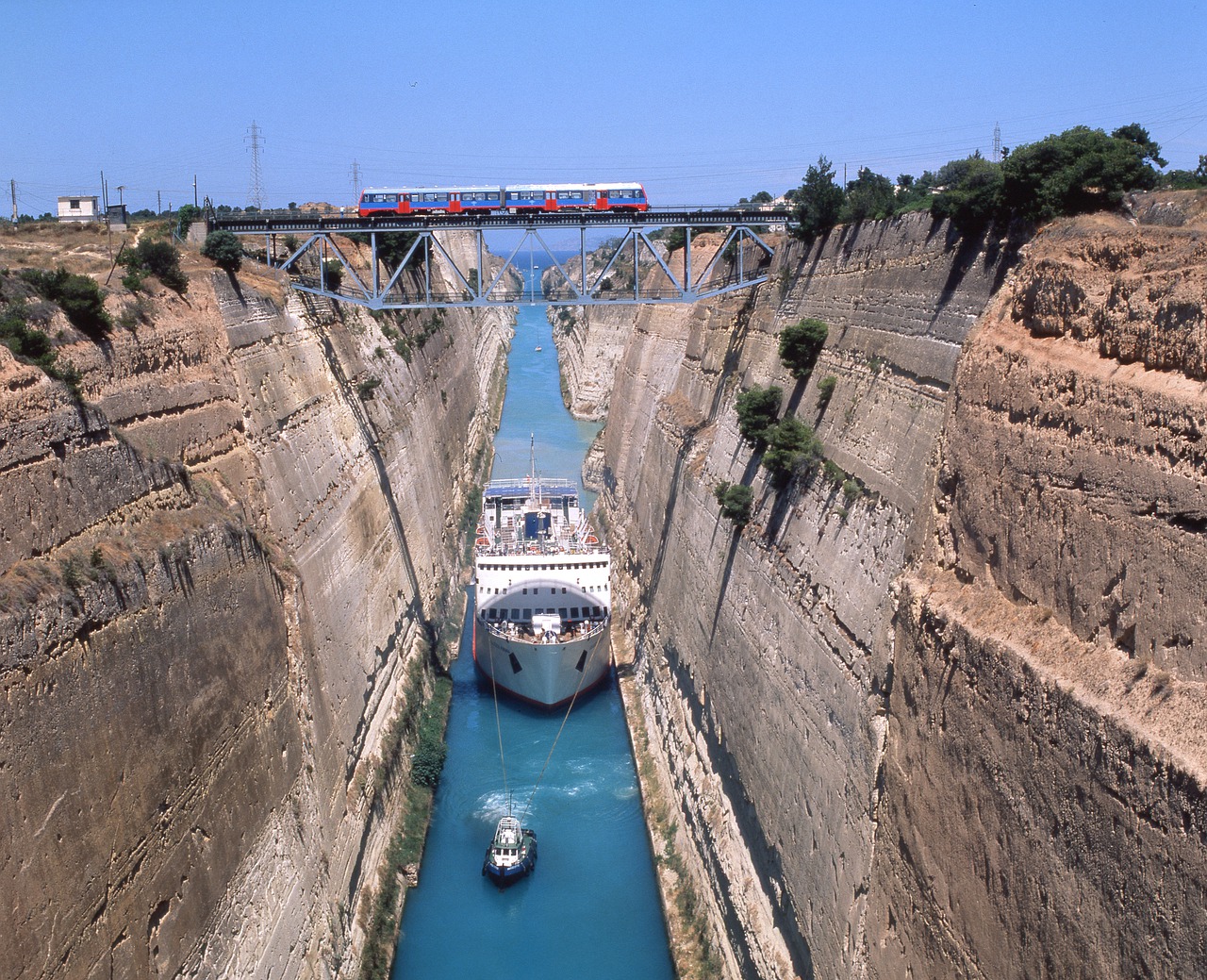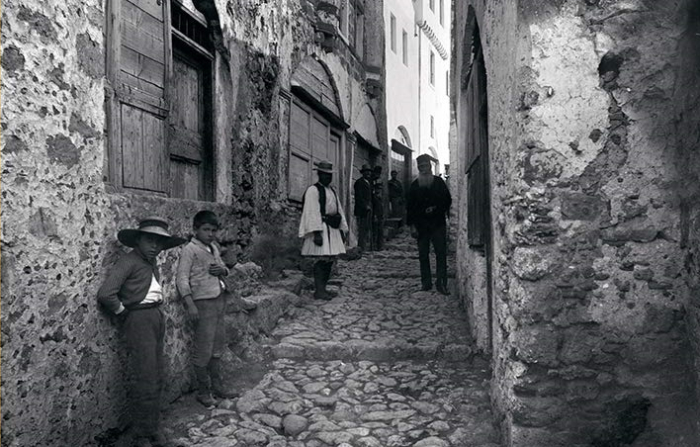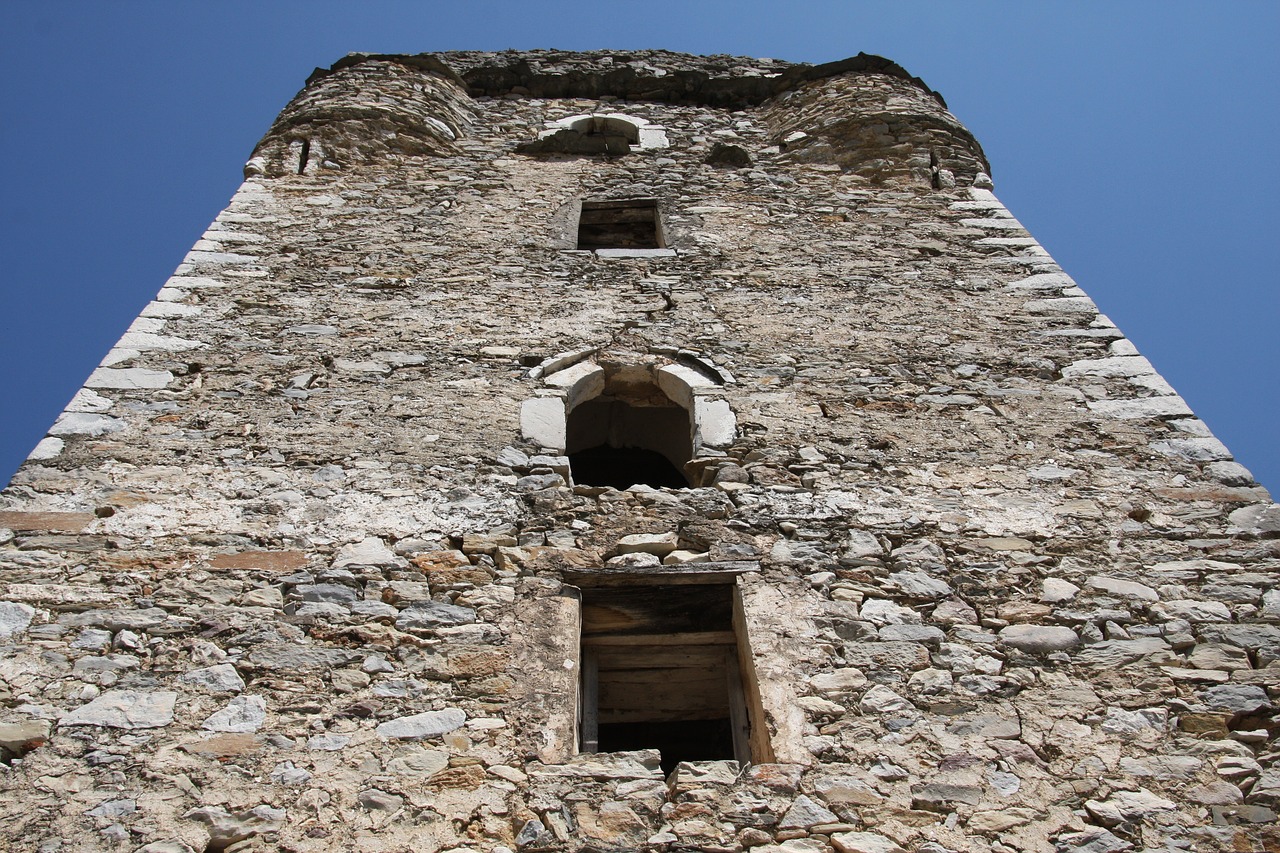- HOME
- Peloponnese
- Top Archaeological Sites in the Peloponnese
Top Archaeological Sites in the Peloponnese
The top archaeological sites in the Peloponnese in Greece include Epidavros, Olympia, Mycenae, Mystras, Tiryns, and Argos.
 Mystras
MystrasThe Peloponnese has some of the best archaeological sites in Greece, so many that you would need to spend a few weeks there in order to visit them all. Mystras alone could easily take up a day of your time, so sprawling is the site and with a lot of climbing up and down.
These are the top archaeological sites in the Peloponnese, in alphabetical order.
Argos
Argos’s claim to fame is that it is the oldest continuously-inhabited city in the whole of Europe, and one of the oldest in the world. It has a lovely setting at the foot of Mount Chaon, and although it’s not really a major name on the tourist trail it has plenty to see and reward a day or two’s visit.
There is no one single archaeological site, but the various archaeological remains are spread throughout the modern city. This makes it unusual, seeing the different layers of life in the same place. Most archaeological sites in Greece are slightly away from the modern cities which grew up nearby.
Argos has some Roman baths, and a theater that is actually bigger than the more famous one at Epidavros, which is about a 40-minute drive to the east. There’s also an acropolis, an ancient agora, and the very unusual Pyramid of Hellinikon. There are several of these in Greece, and although no-one knows for sure what they were used for, it’s thought they may have been inspired by the pyramids in Egypt. See our full page if you want to visit Argos.
Bassae
Bassae is a remote site, set up high, just south of the lovely mountain village of Andritsaina, Andritsaina is well worth a stop, either for lunch or overnight, to get to Bassae early in the morning. The site is remarkable for the stunning 5th-century Temple of Apollo Epicurius (‘Apollo the helper’), which is so precious it has to be covered with a protective tent.
In 1986 Bassae was the first archaeological site in Greece to be placed on UNESCO’s World Heritage List. It was noted for the Bassae Frieze, which is now on display in the British Museum in London, and its remote location means that it has been spared the damage and destruction received by other monuments in major towns and cities. See our full page about the Temple of Bassae.
Corinth
There are actually two archaeological sites to see at Corinth. If you’re visiting the Peloponnese from Athens, Ancient Corinth might well be your first stop, once you’re over the Corinth Canal, and it has various parts to it which are in and around the modern town. These include a Roman amphitheatre and a cemetery, and it’s worth visiting the archaeological museum as at one time Ancient Corinth was one of the most important cities in Greece, with an estimated population of about 90,000 in 400 BC.
A 5-minute drive away in a spectacular hilltop location overlooking the modern town is the site of Acrocorinth (‘Upper Corinth’). This sprawls across the hilltop and with its own water supply this was an impressive fortress until the 19th century, though no-one knows for certain when it was founded. It goes back to Mycenean times at least.
Epidavros
Ancient Epidavros (or Epidaurus) is definitely a must-see archaeological site in the Peloponnese. It’s most famous for its remarkable theatre, which was built in the 4th century BC and the 14,000-seater is still in use today for the annual Athens and Epidavros Festival. However, there is much more to the site than this. It was used as a healing centre, as the whole site was dedicated to Asclepius, the God of Medicine.
The Sanctuary of Asclepius was founded in the 6th century BC and had many shrines and several hospitals. It’s about a 30-minute drive east of Nafplion, which makes a good base for seeing several of the top archaeological sites in the Peloponnese, including Argos, Mycenae and Tiryns, as well as Epidavros. See our Epidavros page for more details.
Isthmia
A 15-minute drive from Corinth, modern Isthmia straddles the Corinth Canal but archaeological remains including the Temple of Poseidon are in the Peloponnese on the western side of the canal. The temple, also known as the Temple of Isthmia, is thought to date from about the 7th century BC. Isthmia also has a bath house with well-preserved mosaic floors, and was the site of the Isthmian Games, and you can see the remains of several stadiums.
Messene
Ancient Messene, to give it its full name, is a 40-minute drive north of Kalamata in the southern Peloponnese. The site was only excavated in the 1980s and it is one of the most comprehensive archaeological sites in the Peloponnese, if not the whole of Greece. Here you can see temples, a stadium, a gymnasium, and a theatre that held 10,000 people, amongst other remains.
Mycenae
Mycenae is about a 30-minute drive north of Nafplion, and is probably the top archaeological site in the Peloponnese. It was so important that it gave its name to a whole period of Greek history. There’s evidence that this particular site was first occupied as early as 5000 BC, but by the 2nd millennium BC it was known as the City of Golf and housed the royal palace of the Trojan War hero, King Agamemnon.
Much of the site was excavated by the German archaeologist Heinrich Schliemann, and though he made some mistakes in his over-enthusiasm for what he was finding, we owe him a debt of gratitude for what he uncovered. See our separate Mycenae page for more details.
Mystras
Mystras is one of the most remarkable places in Greece. It isn’t a conventional archaeological site but the remains of an entire town built on a hill, and which was inhabited till the 1830s. It is another of the must-see sites in the Peloponnese. A few nuns still live in one of the town’s convents, and in addition you can see churches, the remains of palaces, and the remains of the huge hilltop fortress. See more on our Mystras page.
Nemea
The site of Ancient Nemea is about a 30-minute drive southwest from Corinth, a 20-minute drive north of Mycenae, and just to the east of the modern town of Nemea. It makes this northeast corner of the Peloponnese rich in archaeological sites, with Tiryns, Argos and Epidavros all being fairly close by. The area around here has been inhabited since at least 6,000 BC, and by 573 BC this was the site of the Nemean Games. These were held every two years until 271 BC, after which they were moved to Argos, 25 km (16 miles) due south.
Olympia
The archaeological site of Ancient Olympia, original home of the Olympic Games, is something not to be missed when visiting the Peloponnese. The games were first held here in 776 BC and continued to run every four years for over 1,000 years. It’s quite a thrill to walk out onto the original running track, and you can also see the archaeological equivalent of the Olympic Village. The nearby modern town of Olympia also has an archaeological museum and a museum devoted to the Olympic Games. See our page on Ancient Olympia for more information.
Sparta
Few places see their names enter the language, but the former city-state of Sparta is where we get the word ‘spartan’ from. They were a formidable military power, mainly responsible for Greece’s victory in the Greco-Persian Wars, and even defeated their rivals Athens in the Peloponnesian Wars. The site is just to the north of the modern city limits, with the ruins of a theatre, a temple, and other remains. There's more information on our Sparta page.
Tiryns
A 5-minute drive north from Nafplion, going towards Mycenae, brings you to another Peloponnese archaeological site worth seeing. Tiryns was a hilltop fortress and has been inhabited for several thousand years before becoming a significant Mycenean city, to rival Mycenae itself. Today's ruins can’t rival those at Mycenae, which is a 20-minute drive north, but they’re still worth seeing and became a UNESCO World Heritage Site in 1999. See our page on Tiryns.
Click on the map to see an interactive Google Map in a new window.
Latest Posts
-
The Lesser-Known Traditions of Greek Easter
Step off the beaten path this spring and discover the enchanting — and often surprising — Easter traditions found across Greece. -
Easter in the Mystical Castle of Monemvasia
In the castle town of Monemvasia, with its dramatic medieval backdrop and sea views, Easter is a deeply spiritual and atmospheric experience. -
Sifnos: Greece’s Hidden Culinary Star on the Rise
Sifnos, a Cycladic island, is gaining fame for its rich culinary heritage, especially the beloved melopita honey-cheese tart. -
Easter in Leonidio: A Tapestry of Light, Culture and Cliffs
In Leonidio, Easter comes alive with handmade hot air balloons in the sky and lanterns made from bitter oranges in the streets. -
April 9 Strike in Greece to Impact Public Transport, Ferries and Air Travel
Transportation and travel across Greece will face disruptions on Wednesday, April 9, as public transport, ferry and aviation workers join a nationwide strike called by Greek labor unions. -
Ancient Theater of Lefkada Brought Fully to Light Following Systematic Excavation
The Greek Culture Ministry has announced that the first ancient theater ever identified in the Ionian Islands has recently been brought fully to light on Lefkada, revealing an impressive monument that… -
Seven Greek Traditions Recognized as Intangible Cultural Heritage
From traditional barrel-making to age-old folk dances, seven new entries on Greece’s National Inventory preserve the country’s living heritage for future generations. -
Greek Air Traffic Controllers to Hold 24-hour Strike, Disrupting Flights on April 9
The Hellenic Air Traffic Controllers Union have announced a 24-hour strike for Wednesday, April 9, in response to the protest called by the Civil Servants’ Confederation (ADEDY). The strike is being h… -
Ten Best Budget Hotels on Santorini
Greece Travel Secrets picks the ten best budget hotels on Santorini, some with caldera views, some near beaches and some close to the heart of Fira. -
No Ferries in Greece on April 9 as Seamen Join Nationwide Strike
The Pan-Hellenic Seamen’s Federation (PNO) has announced its participation in the 24-hour strike called by the General Confederation of Greek Labor (GSEE) on Wednesday, April 9. The strike, which will…


